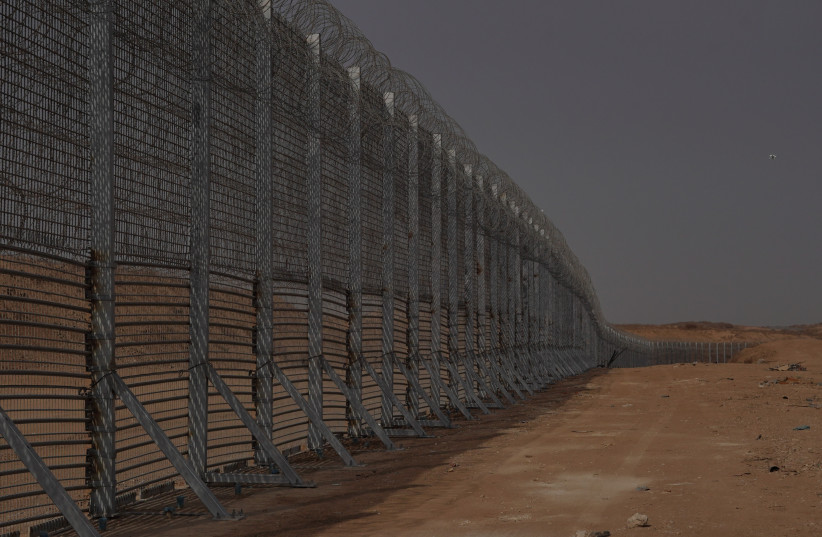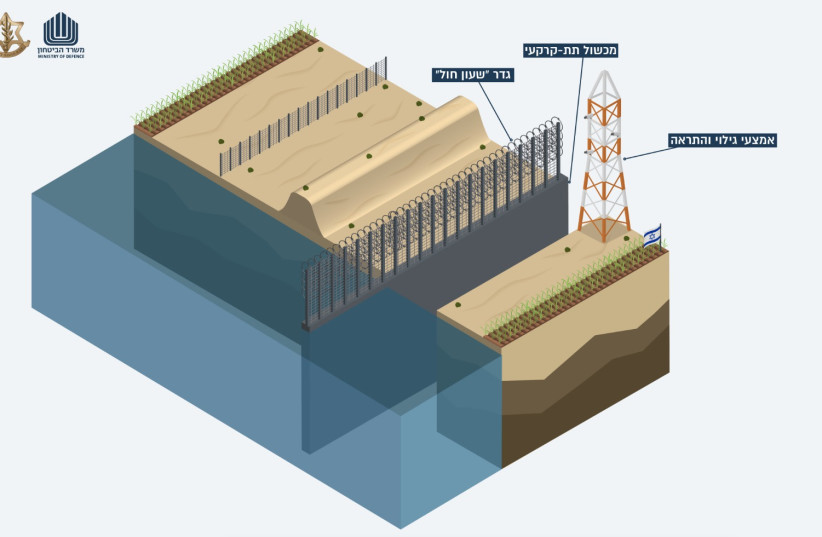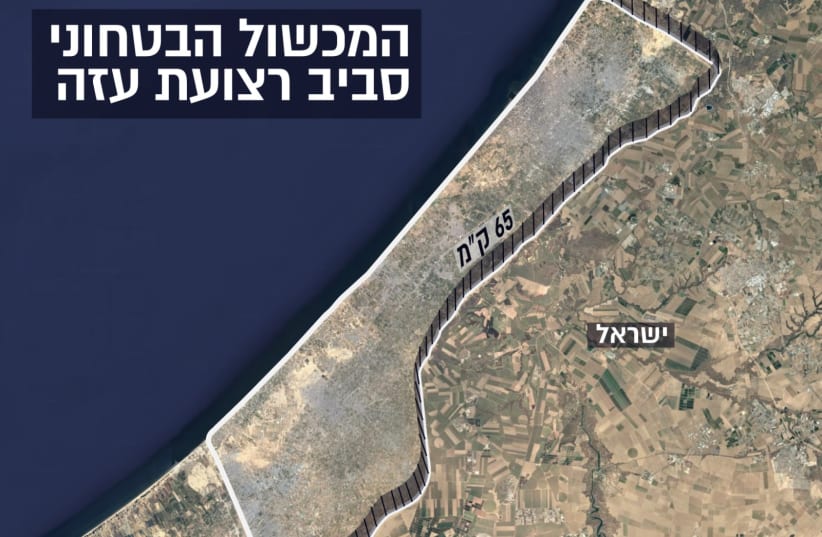The Israeli defense establishment has completed a 65-kilometer (40-mile) upgraded barrier with the Gaza Strip, three years and more than a dozen rounds of violent conflict after work began.
After Hamas made extensive use of its offensive tunnel network during Operation Protective Edge in 2014, the military proposed building the barrier to remove the threat of cross-border attack tunnels, and stop terrorists from Gaza intent on carrying out attacks from infiltrating into southern Israel.
Defense Minister Benny Gantz said the barrier “deprives Hamas of one of their capabilities, and places an iron wall, sensors and concrete between it and the residents of the South. Routine life here is our victory, and it is the greatest enemy of terror organizations.”
Gantz said that the military will continue to neutralize any threat to harm Israeli civilians, with an emphasis on rockets.
“We will prevent the transfer of Iranian knowledge and technology to Gaza, and we will continue to thwart any attempt by Hamas to operate its branches in Judea and Samaria or in Israel – attempts that fail time and time again,” he said.


Construction began on Israel’s upgraded barrier with the Strip in 2017 and lasted for three-and-a-half years, including during the March of Return protests and the various rounds of war that took place between the IDF and terrorist groups in the coastal enclave. The barrier cost approximately NIS 3.5 billion.
“There is no place in the world that has built an underground barrier,” said Fence Administration Director Brig.-Gen. Eran Ofir. “It was a very complex project, both operationally and engineering-wise. The work was not easy. We went through 15 rounds of fighting, we were shot at, and we didn’t stop work for a moment. Today I can inform the residents of the Gaza Strip envelope that there is a barrier, both underground and on the surface, with advanced technology that will prevent infiltrations into Israel in the best way possible.”
According to the Defense Ministry, more than 1,200 people from around the world worked on the project at dozens of points along the border, during which time six concrete plants were established there, with 330,000 trucks pouring three million cubic meters of concrete for the project – “enough to pave a road from Israel to Bulgaria,” said Ofir.
Another 140,000 tons of iron and steel were used in the construction of the barrier, “equivalent to the length of a steel wall from Israel to Australia,” he added.
The fence includes an underground barrier that stretches along the entire border with Gaza, along with a maritime border wall. It has a system of advanced sensor and monitoring devices to detect tunnels, and is combined with a six-meter (about 20-foot) high above-ground fence similar to the one that runs along the Israeli-Egyptian border.
According to Ofir, there are always attempts to build tunnels, and during its construction, dozens of cross-border tunnels were identified and destroyed.


The barrier “does not allow for the construction of additional tunnels to infiltrate into the State of Israel,” he said. “We are constantly monitoring to make sure that the other side will not pass.”
Along with cross-border attack tunnels belonging to Hamas or Palestinian Islamic Jihad, infiltration attempts are common along the border. Many Gazans look to get arrested by IDF troops rather than remain in the Strip, which is on the verge of a humanitarian catastrophe, with serious economic, social and infrastructure crises only getting worse.
While some would-be infiltrators are armed, many are returned to the Strip after questioning, as the military understands that they are not attempting to attack troops or civilians.
The relative quiet in Israel’s South has been shattered several times by war, causing residents to interrupt their daily lives and remain close to bomb shelters since they have approximately 15 seconds to find shelter from rocket and mortar fire. The last war in May saw more than 4,300 rockets and mortars fired toward Israel that killed 11 civilians.
The military says that due in part to the technology on the fence, the IDF was able to thwart many surprise attacks planned by Hamas and Palestinian Islamic Jihad, including cross-border attacks using tunnels.
IDF Chief of Staff Lt.-Gen. Aviv Kohavi called the barrier an “Iron Wall” and a central part of Israel’s defenses.
“It represents thinking outside the box, and expresses the kind of thinking we are committed to in the IDF,” Kohavi said. “A change in reality that what was before it will no longer be. It is quiet now, but a look at the last few months shows that even the lightest violations have been dealt with vigorously and will be in the future, and persistently, and in the last year, especially toward Iran,” he said.
Defense Ministry Director-General Maj.-Gen. (Res.) Amir Eshel called the barrier “one of the most complex engineering projects ever built. It is further proof that there is no task that the defense establishment cannot perform. The barrier has already changed the reality in the South, and will lead to the continued economic and social boom in the communities of the Gaza envelope.”
Approximately 70,000 Israelis reside in the more than 50 communities in the Gaza border area. There has been a marked increase of people moving to the area over the years following Operation Protective Edge.
